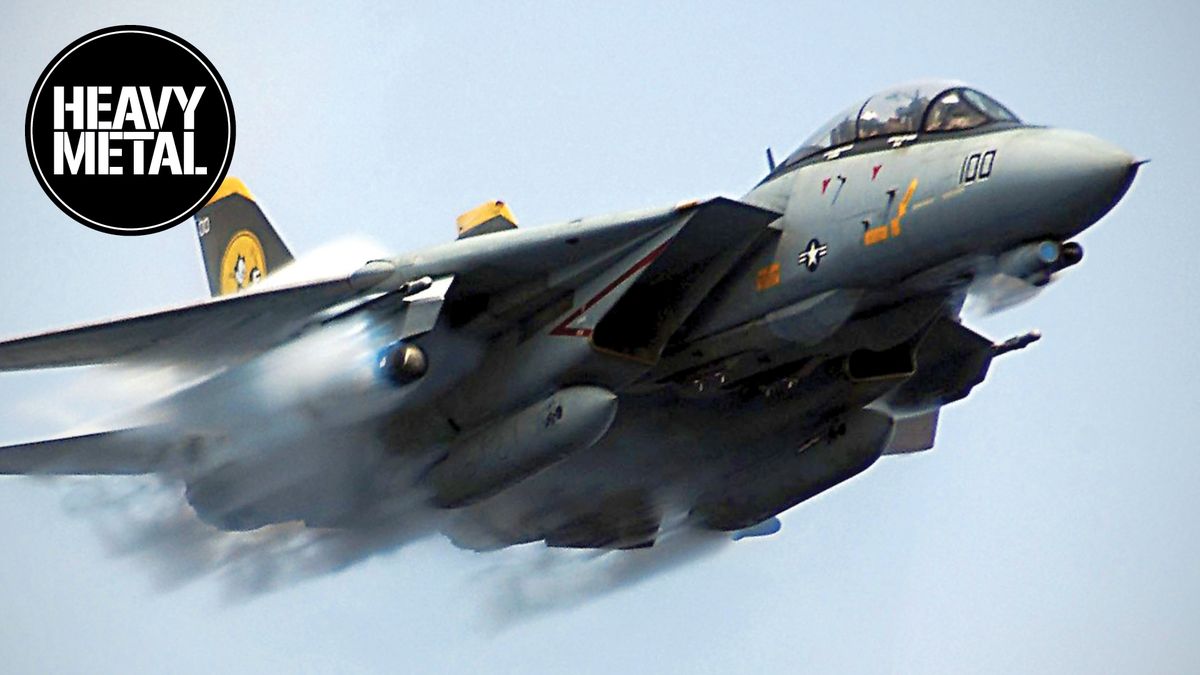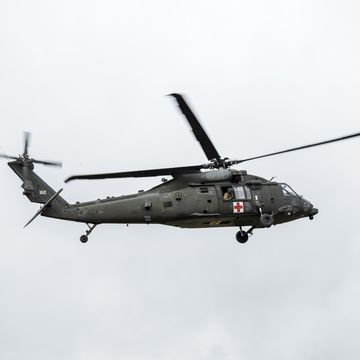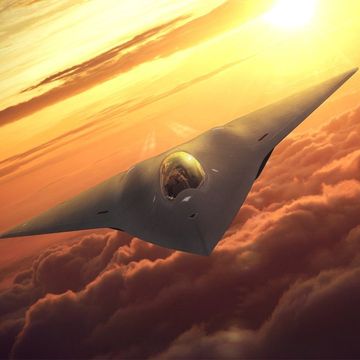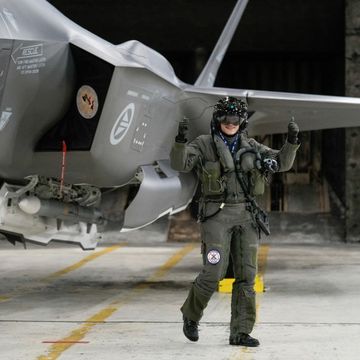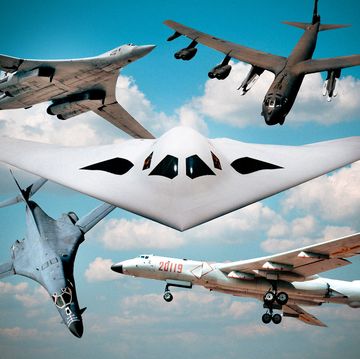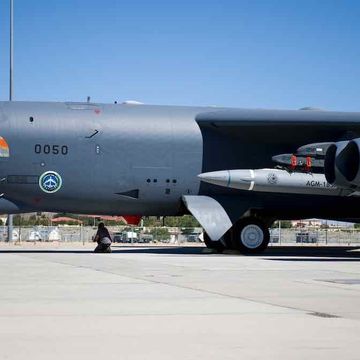- Observers spotted China’s FC-31 “Gyrfalcon” fighter jet at a naval aviation training facility.
- The FC-31 has been around for nearly 10 years without securing a role in the Chinese military.
- The jet will likely replace China’s current carrier fighter, the Shenyang J-15.
A fighter jet that China’s military once considered a white elephant appears to have finally secured a role as the country’s newest carrier fighter.
✈ You love badass planes. So do we. Let’s nerd out over them together.
Observers recently spotted the Shenyang Aircraft Corporation FC-31 Gyrfalcon (formerly known as the J-31), which has been in development since the early 2010s, at a naval aviation training facility in Wuhan. The fighter bears a strong resemblance to American fifth-generation fighters like the F-22 Raptor and F-35 Joint Strike Fighter.
The fighter was parked on an enormous, landlocked model of an aircraft carrier near a pair of mockups of the Chinese Navy’s current strike fighter, the J-15 “Flying Shark,” as well as a mockup of a Z-8 carrier-based helicopter.
The FC-31 first appeared in 2012 with the designation J-31; in time, the F-31 designation (initially applied to export models) overtook the name. The fighter kept a low profile throughout the last decade, with observers believing the Chinese Air Force and Navy weren’t particularly interested in the design and its reportedly weak engines.
Nine years is a long time in the world of the Chinese military, and now, the FC-31 may finally be nearing production. In 2020, Pop Mech reported there were indications the FC-31 could enter service with the Chinese Navy as a carrier-based fighter, now called the “J-35.”
The new fighter’s emergence at the Wuhan test facility is a clear sign the plane is headed to sea, but we don’t yet know if the fighter’s designation is really J-35. For now, we’ll keep calling it the FC-31.
The front end of the FC-31 resembles the F-35, while it has the flat tail and twin engines of the F-22. The Chinese fighter also features internal weapons bays, and the robust tricycle landing gear with two wheels up front suggests it’s designed for carrier use.
China’s existing carriers, Liaoning and Shandong, fly the J-15 “Flying Shark” strike fighter. The J-15 is derived from the fourth-generation Sukhoi Su-33, one of Russia’s two carrier-based fighters. The fifth-generation FC-31 would be a definite upgrade, boosting the air wings of both carriers with a stealthy fighter.
The FC-31 will also probably fill the flight decks of China’s third carrier under construction, tentatively named 003, from the outset. Ultimately, China might operate as many as six carriers, with FC-31s flying from the decks of at least four, if not all of them.
The FC-31 fighter probably isn’t the F-35’s equal, but it’s a significant upgrade from the J-15, and that will make the Chinese Navy happy. China is taking a pragmatic approach to the dangerous—and expensive—world of naval aviation. Instead of rushing to match the U.S. Navy from the outset, it’s learning to crawl, and then walk, and then eventually run. It’s an approach that’s likely to pay off for decades to come.
🎥 Now Watch This:

Kyle Mizokami is a writer on defense and security issues and has been at Popular Mechanics since 2015. If it involves explosions or projectiles, he's generally in favor of it. Kyle’s articles have appeared at The Daily Beast, U.S. Naval Institute News, The Diplomat, Foreign Policy, Combat Aircraft Monthly, VICE News, and others. He lives in San Francisco.


